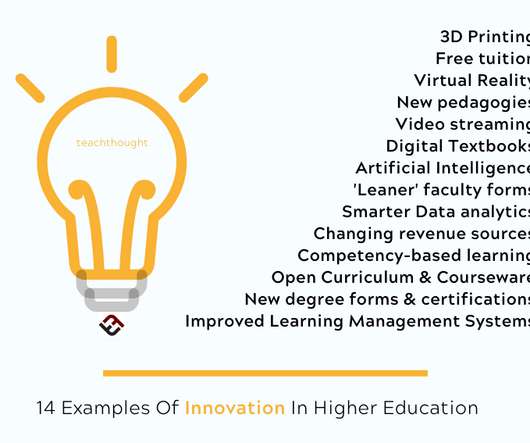?Three Tips For Introducing Competency-Based Learning Into K-12
Edsurge
NOVEMBER 3, 2016
By far, one of the most popular topics at the iNACOL conference in San Antonio last week was “competency-based learning"; out of the conference's approximately 200 sessions, 35 had the phrase in their title. . What exactly is competency-based learning? Check out Competency Works' description here.




















Let's personalize your content